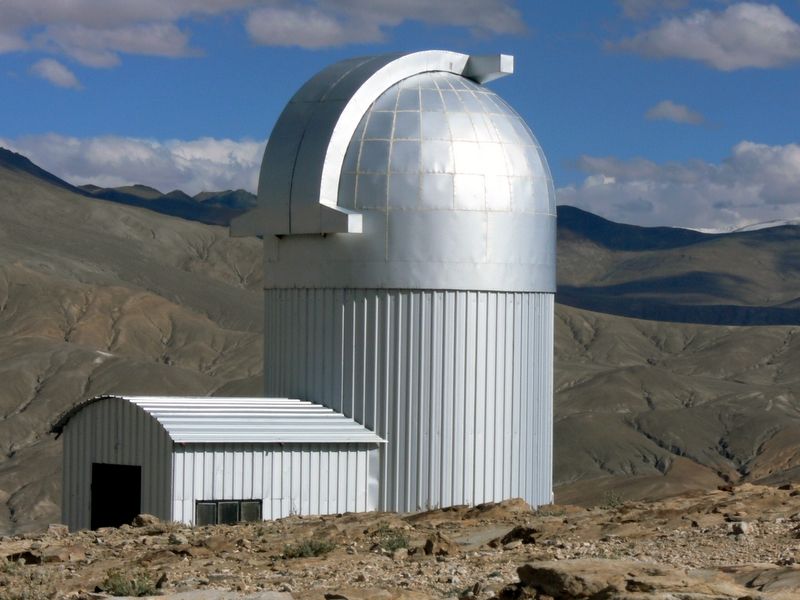|
Bharati (research Station)
Bharati is a permanent Antarctic research station commissioned by India. It is India's third Antarctic research facility and one of two active Indian research stations, alongside Maitri. India's first committed research facility, Dakshin Gangotri, is being used as a supply base. India has demarcated an area beside the Larsemann Hills at 69°S, 76°E for construction. The research station has been operational since 18 March 2012. Since its completion, India has become one of nine nations to have multiple stations within the Antarctic Circle. Bharati's research mandate focuses on oceanographic studies and the phenomenon of continental breakup. It also facilitates research to refine the current understanding of the Indian subcontinent's geological history. News sources have referred to the station as "Bharathi", "Bharti" [...More Info...] [...Related Items...] OR: [Wikipedia] [Google] [Baidu] |
Research Stations In Antarctica
Multiple governments have set up permanent research stations in Antarctica and these bases are widely distributed. Unlike the drifting ice stations set up in the Arctic, the current research stations of the Antarctic are constructed either on rocks or on ice that are (for practical purposes) fixed in place. Many of these stations are demographics of Antarctica, staffed throughout the year. Of the 56 signatories to the Antarctic Treaty System, Antarctic Treaty, a total of 55 countries (as of 2023) operate seasonal (summer) and year-round research stations on the continent. The number of people performing and supporting scientific research on the continent and nearby islands varies from approximately 4,800 during the summer to around 1,200 during the winter (June). In addition to these permanent stations, approximately Antarctic field camps, 30 field camps are established each summer to support specific projects. History First bases During the Heroic Age of Antarctic Explo ... [...More Info...] [...Related Items...] OR: [Wikipedia] [Google] [Baidu] |
Indian Remote Sensing Satellite
India's remote sensing program was developed with the idea of applying space technologies for the benefit of humankind and the development of the country. The program involved the development of three principal capabilities. The first was to design, build and launch satellites to a Sun-synchronous orbit. The second was to establish and operate ground stations for spacecraft control, data transfer along with data processing and archival. The third was to use the data obtained for various applications on the ground. India demonstrated the ability of remote sensing for societal application by detecting coconut root-wilt disease from a helicopter mounted multispectral camera in 1970. This was followed by flying two experimental satellites, Bhaskara-1 in 1979 and Bhaskara-2 in 1981. These satellites carried optical and microwave payloads. India's remote sensing programme under the Indian Space Research Organization (ISRO) started off in 1988 with the IRS-1A, the first of the serie ... [...More Info...] [...Related Items...] OR: [Wikipedia] [Google] [Baidu] |
Jantar Mantar, Jaipur
The Jantar Mantar is a collection of 19 astronomical instruments built by the Rajput king Sawai Jai Singh, the founder of Jaipur, Rajasthan. The monument was completed in 1734.The Jantar Mantar at Jaipur, India Portal to the Heritage of Astronomy, in partnership with UNESCO World Heritage Site It features the world's largest stone , and is a . It ... [...More Info...] [...Related Items...] OR: [Wikipedia] [Google] [Baidu] |
Indian Astronomical Observatory
The Indian Astronomical Observatory (IAO) is a high-altitude astronomy station located in Hanle, India and operated by the Indian Institute of Astrophysics. Situated in the Western Himalayas at an elevation of 4,500 meters (14,764 ft), the IAO is one of the world's highest located sites for optical, infrared and gamma-ray telescopes. It is currently the tenth-highest optical telescope in the world. Location The Indian Astronomical Observatory stands on Mt. Saraswati, Digpa-ratsa Ri, Hanle in the south-eastern Ladakh union territory of India. Accessing the observatory located near the Chinese border ( Line of Actual Control), requires a ten-hour drive from Leh city. Nyoma, 75 km northwest from Hanle, has an Indian military airbase. History In the late 1980s, a committee chaired by B. V. Sreekantan recommended that a national, large optical telescope must be taken up as a priority project. The search for the observatory site began in 1992 under the leadership ... [...More Info...] [...Related Items...] OR: [Wikipedia] [Google] [Baidu] |
Indian Antarctic Program
The Indian Antarctic Programme is a multi-disciplinary, multi-institutional programme under the control of the National Centre for Polar and Ocean Research, Ministry of Earth Sciences, Government of India. It was initiated in 1981 with the first Indian expedition to Antarctica.Walawalkar (2015), Gad (2008) The programme gained global acceptance with India's signing of the Antarctic Treaty and subsequent construction of the Dakshin Gangotri Antarctic research base in 1983, superseded by the Maitri base from 1989. The newest base commissioned in 2012 is Bharati, constructed out of 134 shipping containers. Under the programme, atmospheric, biological, earth, chemical, and medical sciences are studied by India, which has carried out 40 scientific expeditions to the Antarctic. History The origin of the Indian missions to the Antarctic are traced to the joint Indian Space Research Organisation – Hydrometeorological Centre of Russia agreements, which led to Indians, such a ... [...More Info...] [...Related Items...] OR: [Wikipedia] [Google] [Baidu] |
Defence Institute Of High Altitude Research
The Defence Institute of High Altitude Research (DIHAR) is a defence laboratory of the Defence Research and Development Organisation (DRDO) located in Leh city of Ladakh in India. It conducts research on cold arid agro-animal technologies. History In 2014, the Defence Institute of High Altitude Research (DIHAR) successfully cross-bred and produced the hybrid Zanskar ponies, which can carry an increased weight load for the Indian Army's requirements. In 2015, DIHAR established an Extreme Altitude Research Centre in Chang La, Jammu and Kashmir, at a height of 17,600 ft above mean sea level, making world’s highest terrestrial research and development centre. In 2020, with an intent to make the DRDO leaner and more effective, it was proposed to merge the Defence Institute of Bio-Energy Research (DIBER), DIHAR, and Defence Research Laboratory (DRL). The collaboration with the Defence Food Research Laboratory and the Central Food Technological Research Institute of the Council ... [...More Info...] [...Related Items...] OR: [Wikipedia] [Google] [Baidu] |
Defence Research And Development Organisation
The Defence Research and Development Organisation (DRDO) is an agency under the Department of Defence Research and Development in the Ministry of Defence of the Government of India, charged with the military's research and development, headquartered in New Delhi, India. It was formed in 1958 by the merger of the Technical Development Establishment and the Directorate of Technical Development and Production of the Indian Ordnance Factories with the Defence Science Organisation under the administration of Jawaharlal Nehru. Subsequently, Defence Research & Development Service (DRDS) was constituted in 1979 as a service of Group 'A' Officers / Scientists directly under the administrative control of the Ministry of Defence. With a network of 52 laboratories that are engaged in developing defence technologies covering various fields like aeronautics, armaments, electronics, land combat engineering, life sciences, materials, missiles, and naval systems, DRDO is India's largest a ... [...More Info...] [...Related Items...] OR: [Wikipedia] [Google] [Baidu] |
Bryum Bharatiense
''Bryum bharatiense'' is a species of moss native to Antarctica. It was discovered by a team of researchers from the Central University of Punjab. Etymology The species has been named after Bharati, the Indian research station in Antarctica. The station itself was named after the Hindu goddess Bharati. Habitat The moss predominantly grows in areas where penguins breed in large numbers. See also *Wildlife of Antarctica The wildlife of Antarctica are extremophiles, having adapted to the dryness, low temperatures, and high exposure common in Antarctica. The extreme weather of the interior contrasts to the relatively mild conditions on the Antarctic Peninsula and ... References {{Taxonbar, from=Q107639061 bharatiense ... [...More Info...] [...Related Items...] OR: [Wikipedia] [Google] [Baidu] |
Moss
Mosses are small, non-vascular plant, non-vascular flowerless plants in the taxonomic phylum, division Bryophyta (, ) ''sensu stricto''. Bryophyta (''sensu lato'', Wilhelm Philippe Schimper, Schimp. 1879) may also refer to the parent group bryophytes, which comprise Marchantiophyta, liverworts, mosses, and hornworts. Mosses typically form dense green clumps or mats, often in damp or shady locations. The individual plants are usually composed of simple leaf, leaves that are generally only one cell thick, attached to a plant stem, stem that may be branched or unbranched and has only a limited role in conducting water and nutrients. Although some species have conducting tissues, these are generally poorly developed and structurally different from similar tissue found in vascular plants. Mosses do not have seeds and after fertilisation develop sporophytes with unbranched stalks topped with single capsules containing sporangium, spores. They are typically tall, though some species ar ... [...More Info...] [...Related Items...] OR: [Wikipedia] [Google] [Baidu] |
Felix Bast
Felix Bast, born as V. M. Sreejith Nambissan (വടക്കേ മഠം ശ്രീജിത്ത് നമ്പീശൻ), is an Indian phycologist, author, and public educator based at the Central University of Punjab. He is the member of the high-profile advisory council of International Science Council, Paris, and has discovered seven new species of plants from India and Antarctica. Early life and education Felix Bast was born in Payyannur, Kerala, India, to the Vadakke Madam house, a Malayali Brahmin family. He attended government Boys' High School in Payyannur. Subsequently, he completed BSc in microbiology from Kannur University with the university first rank and MSc in biotechnology with First Class from the University of Madras Guindy Campus. Bast was associated with the Department of Chemical Engineering, Indian Institute of Technology, Bombay as a PhD student and CSIR-JRF. In 2005 he left IIT Bombay to accept the Japanese Government Doctoral Scholarship ( ... [...More Info...] [...Related Items...] OR: [Wikipedia] [Google] [Baidu] |
Hyderabad
Hyderabad is the capital and largest city of the Indian state of Telangana. It occupies on the Deccan Plateau along the banks of the Musi River (India), Musi River, in the northern part of Southern India. With an average altitude of , much of Hyderabad is situated on hilly terrain around Lakes in Hyderabad, artificial lakes, including the Hussain Sagar lake, predating the city's founding, in the north of the city centre. According to the 2011 census of India, Hyderabad is the List of cities in India by population, fourth-most populous city in India with a population of residents within the city limits, and has a population of residents in the Hyderabad Metropolitan Region, metropolitan region, making it the List of metropolitan areas in India, sixth-most populous metropolitan area in India. With an output of 95 billion, Hyderabad has the sixth-largest urban economy in India. The Qutb Shahi dynasty's Muhammad Quli Qutb Shah established Hyderabad in 1591 to extend the ... [...More Info...] [...Related Items...] OR: [Wikipedia] [Google] [Baidu] |
CARTOSAT-1
Cartosat-1 (formerly IRS-P5) is a stereoscopic Earth observation satellite in a Sun-synchronous orbit, and the first one of the Cartosat series of satellites. The eleventh satellite of ISRO in Indian Remote Sensing Satellite (IRS) series. The satellite was launched by Indian Space Research Organisation and is operated by NTRO. Weighing around 1560 kg at launch, its applications will mainly be towards cartography in India. Launch It was launched by PSLV-C6, on 5 May 2005 at 04:44:00 UTC from the newly built Second Launch Pad at Sriharikota. Images from the satellite will be available from GeoEye for worldwide distribution. The satellite covers the entire globe in 1867 orbits on a 126-day cycle. Adjacent paths are covered by a separation of eleven days. History Department of Space (DoS), government of India, has launched a series of satellites for Earth's resource management and monitoring. These satellites have been very successful in providing data in various sc ... [...More Info...] [...Related Items...] OR: [Wikipedia] [Google] [Baidu] |





